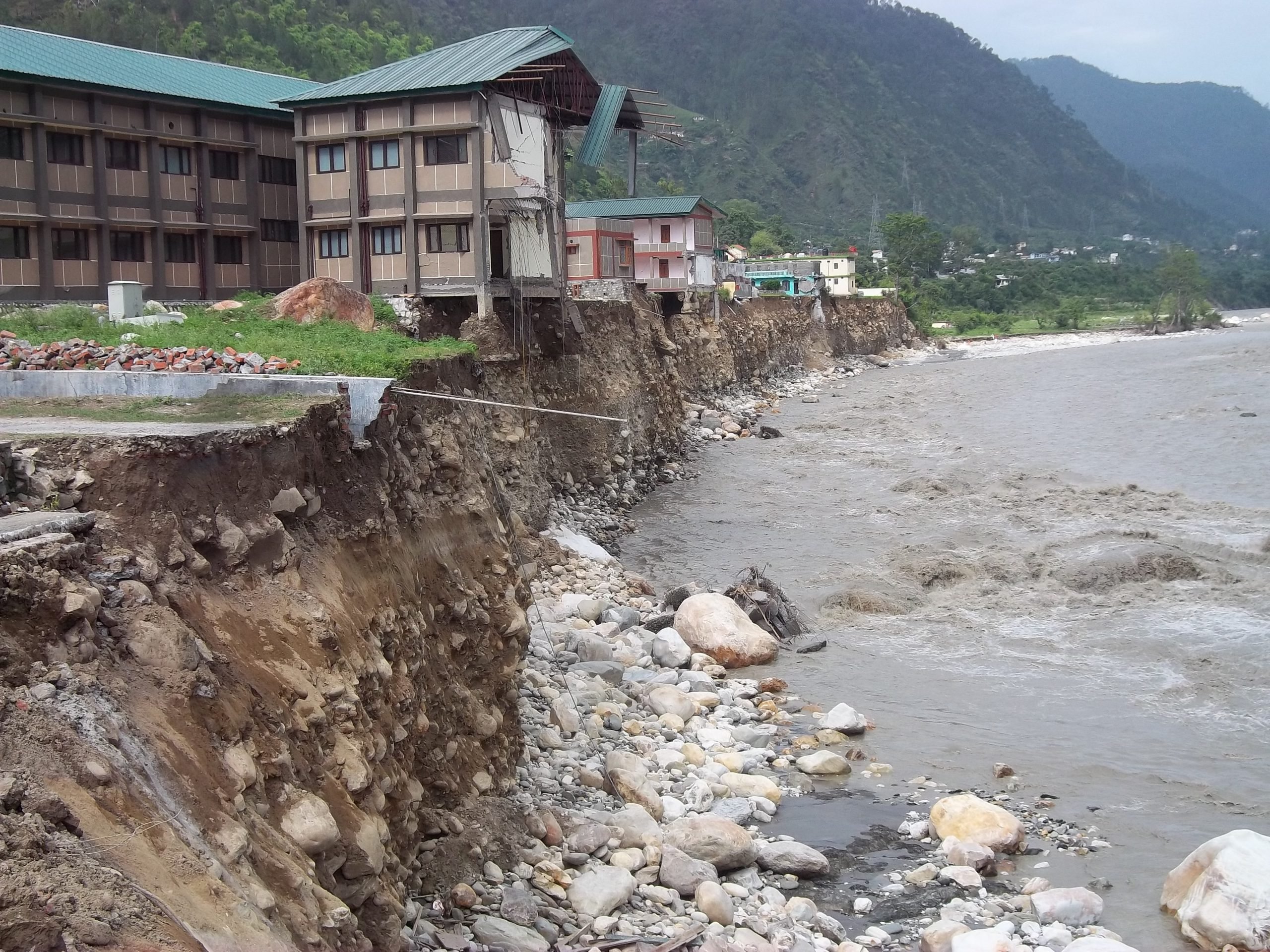The devastating floods that recently hit several river valleys of the Uttarakhand mountains have brought back to the fore the need to reconsider how development is conducted in the region, as well as the viability of creating “ecologically sensitive zones” in the Indian Himalaya. While the floods were caused by a massive amount of rain in a short span of time, some speculate that the unprecedented level of destruction from the deluge was the result of unsound development, deforestation and global warming.
In response to the disaster, environment minister Jayanthi Natarajan and other officials are urging the Indian government to honour its pledge to create “eco-zones” in the region, such as the one proposed for the 100-kilometre stretch from Gangotri to Uttarkashi. This area was hit hard by widespread flash floods last August, but is now suffering from a second and even more devastating event only ten months later.
These floods have heightened the urgency to create eco zones. These proposals were prompted in part by the concerns of those who opposed the construction of hydroelectric dams on one of the last free-flowing stretches of the Upper Ganga River (also known as the Bhagirathi), which emerges from the Gaumukh glacier. The recent deluge that engulfed houses, bridges, temples and roads provides proof that such dams—three of which were halted by the government in 2010—represent outdated models of development that are inappropriate, short-sighted and dangerous.
In theory, establishing eco-zones could help enforce environmental regulations and curb the construction of hotels, houses and dams in sensitive and flood-prone areas. If all of the planned dam projects are scrapped, the hills will be safe from the dynamite blasting used to build run-of-river hydroelectric dams. In contrast to reservoir dams, run-of-river projects direct water out of the river and into tunnels where it is dropped at high pressure down a steep incline for energy production. The water from such dams is typically released back into the river after about ten kilometres.
Dams ditched on the upper Ganga
The cancelled dams on the upper stretch of the Ganga, however, would have created a veritable cascade of projects leaving much of the riverbed dry in low-flow winter seasons. Before construction was halted, residents living nearby worried that the lack of water in the sacred river would hinder the practice of Hindu cultural and religious rites of passage. Villagers also blamed dam construction for the loss of local springs and the increased frequency of landslides and road accidents. Adding to the debate, environmentalists cautioned that the heavy monsoon flows would also carry high loads of corrosive silt that would damage the turbines, hampering their productivity, and therefore the rationale for building the dams in the first place.
In light of these concerns and the recent collapse of infrastructure near the dam sites, leading environmental activists argue the Indian government would do better to improve losses from wasteful electricity transmissions and promote energy reduction in agriculture, business and industry.
While there is an urgent need to promote sound and holistic development policies in places such as the Uttarakhand Himalaya, it is vital to consult mountain residents and address their needs in culturally sensitive ways. Overlooking their voices in the planning process could lead to the failure of well-intended policies.
Local opposition to eco-plans
Before the recent floods hit, for instance, there was a major backlash against the closure of dams on the upper stretch of the Ganga because some people worried the government would not allow any future development projects in the region once it became an eco zone. For a time, these movements gained traction because even though large hydroelectric projects have many drawbacks, they also offer attractive opportunities for employment and income generation in poor regions of the Himalaya.
Proponents of dams on the upper Ganga have in recent years argued that the only alternative to these projects was sustained poverty and rising male migration out of the region, which has increased the workloads of women left behind to tend to fields and livestock.
While the recent disasters have put the pro-dam arguments into perspective, by showing the short-term benefits and limited longevity of such projects, the urgent need to take locals concerns and livelihood struggles into consideration remains.
The danger, as historian Ramachandra Guha pointed out long ago, is that policy makers try to promote a conservation model once prominent in places like the US that prioritises the preservation of ecosystems over the lives of the people that are dependent on them. Instead, what is needed are sound and sustainable ways of economic activity that promote jobs without destroying the beauty of the mountains or endangering the lives of millions of people. A focus on ecological as well as human resilience will prevent the development debate shifting from a resource extraction model to an ill-suited national parks model.
Dams or no dams, big changes are taking place in the mountains and any eco-zone policy must address the multitude of challenges simultaneously. If the climate change science is correct, in the coming years the region will experience increasingly erratic water supplies, with periods of scarcity followed by devastating floods; continued retreat of Himalayan glaciers; and more frequent crop failures. Although governments have started to address these phenomena through national action plans, more proactive measures are needed to support fragile Himalayan ecologies and the people who live there.
While large dams on the Ganga may be unsustainable (and potentially at odds with cultural and religious practices), it is vital to look for alternative, people-centered forms of “development” that make life more prosperous—and safe—for mountain residents.
Georgina Drew is a lecturer in anthropology and development studies at the University of Adelaide and has worked in the Himalaya for over a decade.
